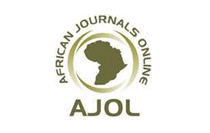Mansoura Veterinary Medical Journal
Document Type
Original Article
Subject Areas
Virology
Keywords
duck hepatitis Avirus-1, H5 AIV, RT-PCR and sequencing.
Abstract
Objective: To identify viruses that affect ducks using serological and molecular studies. Design: Diagnostic study. Procedures: Twenty pooled liver samples were collected from ducklings with nervous signs and high mortality suspected to be infected by duck hepatitis virus (DHV) for less than 2 weeks. All samples were inoculated into allantoic cavities of SPF embryonated chicken eggs (ECGs) for three successive passages. Isolates were serologically identified by agar gel precipitation (AGPT) and the fluorescent antibody technique (FAT) using DHAV-1 antibodies. In addition, another 20 pooled lung and pancreas samples from ducks for more than one month were suspected to be infected by avian influenza virus (AIV) and showed nervous signs, including ataxia and torticolus. Suspected AIV samples were tested by reverse transcriptase polymerase chain reaction (RT-PCR) for the H5 gene. Finally, sequencing and sequencing analysis of our RT-PCR products of the DHAV-1 3D gene and AIV H5 gene were compared with those published in GenBank. Results: Twelve of 20 local isolates of DHAV-1 were positive for AGPT and 15 were positive for FAT. Twelve samples suspected of having AIV showed a positive HA reaction. By RT-PCR, five selected isolates of DHAV-1 and five out of ten tested samples of AIV were positive and gave the expected bands. Our DHAV-1 isolates showed 100% identity with other Egyptian sequences from GenBank, and H5 AIV showed 96-97% identity. Conclusion and clinical relevance: Both DHAV-1 and H5 AIV in ducks could be identified using serological and molecular methods.
How to Cite This Article
Elhoseny, Alshaymaa A.; Mosad, Samah M.; Elkenawy, Ali A.; and Abdelrahmn, Sahar E.
(2023)
"Recent detection and Genotypic characterization of duck hepatitis virus A type 1and H5 avian influenza virus from ducks.,"
Mansoura Veterinary Medical Journal: Vol. 24:
Iss.
4, Article 18.
DOI: https://doi.org/10.35943/2682-2512.1221
Publication Date
2023






